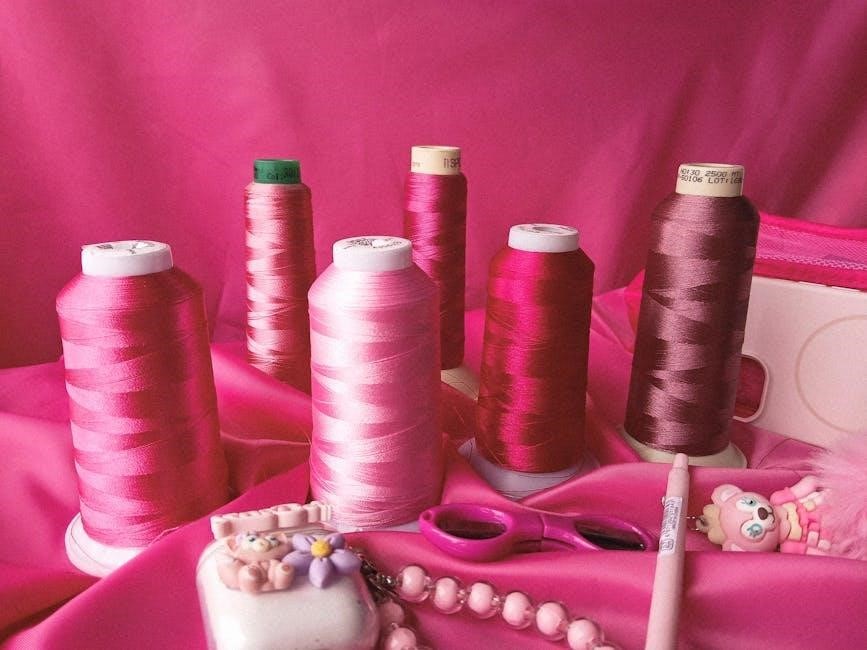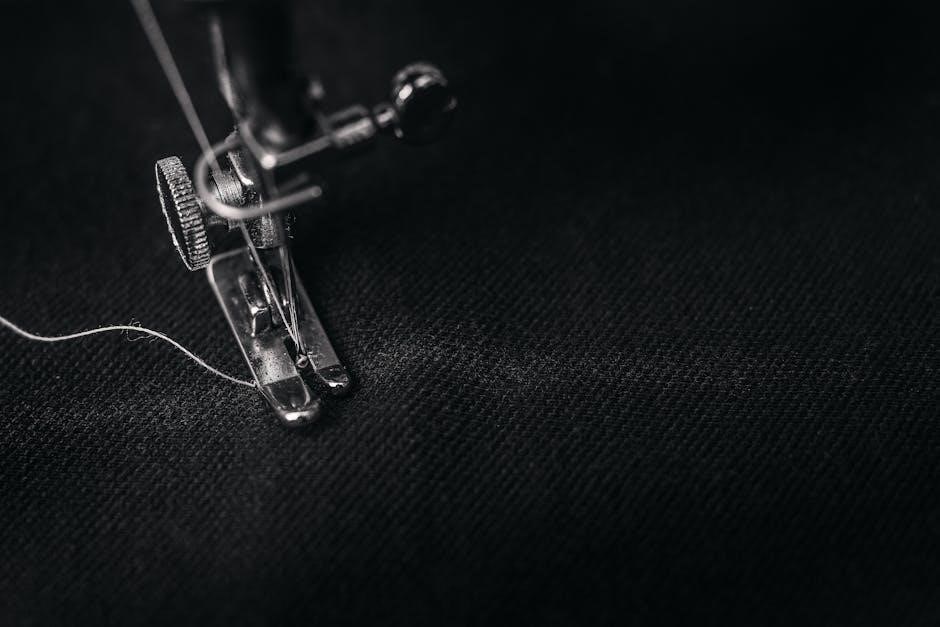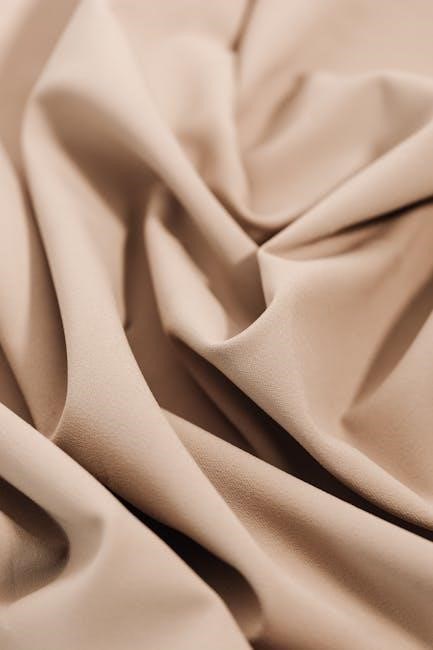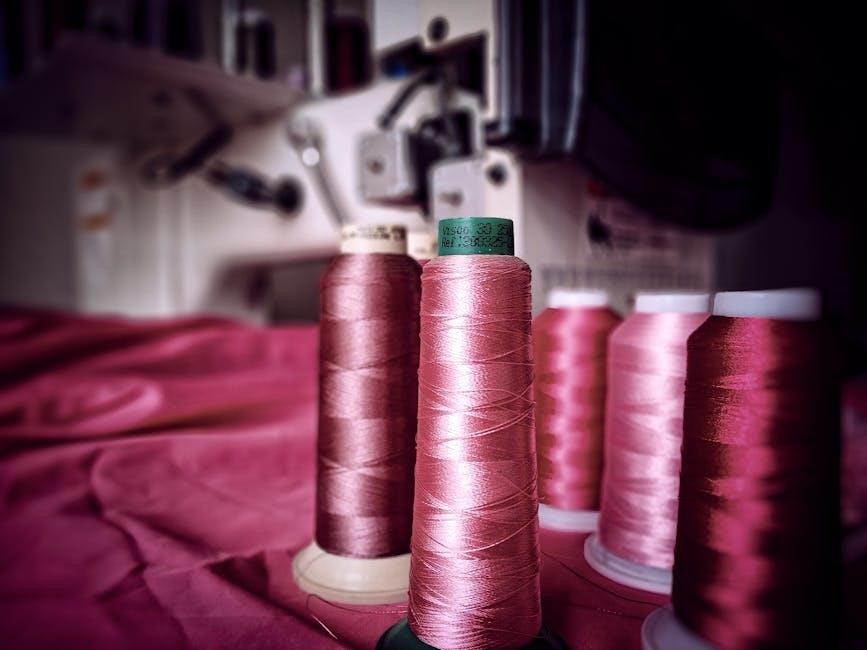Welcome to the EverQuest Tailoring Guide, a comprehensive resource for mastering the art of tailoring in the vast world of Norrath. This guide covers essential skills, tools, materials, and techniques to help crafters of all levels create high-quality armor, clothing, and items. Whether you’re a novice or an experienced tailor, this guide provides detailed insights and strategies to enhance your crafting journey, ensuring you unlock the full potential of this versatile tradeskill.
What is Tailoring in EverQuest?
Tailoring in EverQuest is a tradeskill that allows players to craft items such as armor, clothing, and other textiles using materials like cloth, animal hides, and patterns. It requires a sewing kit and essential tools to combine materials into finished products. Tailors can create items that provide unique benefits, such as armor for protection or bags for storage. The skill involves understanding material qualities, patterns, and recipes to produce high-quality gear. Tailoring is a versatile tradeskill that supports both personal use and trade with other players, making it a valuable skill in the world of Norrath. Crafting success depends on skill level, stats like Intelligence or Wisdom, and the quality of materials used.
Why is Tailoring Important?
Tailoring is an essential tradeskill in EverQuest that offers numerous benefits to players. It allows crafting of cloth and leather armor, which provide critical protection and stats for characters. Tailors can create items like backpacks, belts, and specialty gear that enhance gameplay. High-quality crafted items often surpass those found as loot, making tailoring a valuable asset for both personal use and trade. Additionally, tailoring supports other tradeskills by producing materials like leather padding for smithing. The ability to customize gear according to specific needs makes tailoring a cornerstone of character development and a key contributor to in-game economy and community crafting efforts.

Getting Started as a Tailor
Embark on your tailoring journey by acquiring a sewing kit and gathering basic materials. Start with simple patterns and gradually refine your skills through practice and experimentation.
Choosing the Right Race and Class for Tailoring

Selecting the right race and class is crucial for tailoring in EverQuest. While tailoring is accessible to most races and classes, certain combinations offer distinct advantages. For instance, races like Barbarians, Ogres, and Trolls, along with classes such as Monks and Necromancers, often have access to unique patterns and quests that enhance tailoring progression. Additionally, races with higher Dexterity or Intelligence may find it easier to achieve skill increases, as these stats influence crafting success. Researching race-specific bonuses and class-related quests can help optimize your tailoring journey, ensuring you make the most of your character’s abilities and resources.
Obtaining a Sewing Kit and Essential Tools
A sewing kit is the cornerstone of tailoring in EverQuest. These kits can be purchased from most leatherworking shops across Norrath. Once acquired, they serve as your primary tool for crafting. Essential tools include a sewing kit, a skinning knife for adjusting pelt quality, and patterns for specific items. Additional materials like silk threads, pelts, and cloths are crucial for crafting. Organize your tools and materials efficiently to streamline the crafting process. Remember, each item must be placed in its own slot within the sewing kit to avoid complications. With these tools in hand, you’re ready to begin crafting a wide array of items.
Understanding the Basics of Tailoring Skills
Mastering tailoring in EverQuest begins with understanding the fundamentals of the skill. Your success depends on your character’s stats, particularly Intelligence and Wisdom, as the higher of these two determines your chance of skill improvements. Additionally, Dexterity plays a role in crafting efficiency. The crafting process involves combining patterns, materials, and tools in your sewing kit. Each crafted item has a trivial level, which is the skill level at which it becomes too easy to provide further skill gains. To maximize progress, focus on crafting items near your current skill level; Avoid stacking materials, as this can hinder the crafting process. With practice and patience, you’ll refine your skills and unlock advanced recipes.

Materials and Resources
Crafting in EverQuest requires high-quality materials like cloth, animal hides, silks, and pelts. These resources, often farmed from enemies or purchased in the Bazaar, are essential for tailoring success. Skinning knives help adjust pelt quality, while silks and pelts stack up to 200, making them versatile for crafting wristbands and other items. Understanding material quality and trivial levels ensures efficient skill progression and optimal crafting outcomes.
Types of Cloth and Animal Hides
In EverQuest, tailors work with various materials, including cloth, silks, and animal hides. Cloth is categorized into different qualities, such as Low Quality, Medium Quality, and High Quality, each suited for specific recipes. Silks, like Silk Swatches and Shadow Silk, are versatile and used in crafting high-end items. Animal hides, including wolf, cat, and bear pelts, are graded as Ruined, Low Quality, Medium Quality, and High Quality. These hides are essential for crafting leather armor and other items. The quality of materials directly affects the success and trivial level of crafted items, making material selection crucial for skill progression and crafting efficiency.
Farming Locations for Materials
Farming materials is a crucial part of tailoring in EverQuest. Key locations include North Karana for wolf pelts, Lake of Ill Omen for Sarnak Hatchling drops, and Sol B for shadow wolf pelts. Highland Lions in North Karana yield high-quality lion skins, while East Cabilis is ideal for gnoll fur. South Karana and Lower Guk are prime spots for rare skins and silks. Always scout zones for mobs that drop specific materials, as higher-quality pelts and silks often come from more dangerous areas. Efficient farming is essential for stockpiling resources, ensuring steady progression in tailoring skills and crafting high-end items.

Crafting Basics
Crafting in EverQuest requires a Sewing Kit, patterns, and materials like silks, pelts, and threads. Combine these in the kit to create items, with stats like Intelligence or Wisdom influencing skill gains.

The Crafting Process and Patterns
In EverQuest, tailoring involves using a Sewing Kit to combine materials like silks, pelts, and threads with specific patterns. Patterns dictate the final product, such as armor or bags. To craft, place the pattern and materials in the kit, ensuring materials are not stacked. The crafting process consumes resources and may fail or succeed based on skill level. Higher-quality materials often yield better results. Patterns can be acquired through quests, vendors, or drops. Understanding trivial levels is crucial, as they determine when a recipe becomes too easy to provide skill gains. Efficient crafting requires organizing materials and patterns to minimize waste and maximize progress.
Role of Stats in Tailoring Success
In EverQuest, character stats significantly influence tailoring success. Intelligence and Wisdom determine skill-up chances, with the higher stat offering better odds. Higher Dexterity improves crafting efficiency and success rates. These stats can be bolstered through equipment, making stat-focused gear crucial for tailors. Understanding how stats interact with crafting helps optimize progress, especially when tackling complex recipes. Balancing stats ensures consistent skill improvements and reduces crafting failures. This stat-based system adds depth to the crafting process, rewarding strategic character development. Tailors must consider their stats to maximize efficiency and achieve mastery in their craft. Proper stat allocation is key to advancing skills and producing high-quality items.

Advanced Crafting Techniques
Mastering EverQuest tailoring involves understanding trivial levels, utilizing special recipes, and experimenting with unique material combinations. Advanced techniques ensure high-quality outputs and efficient skill progression, unlocking intricate designs and patterns.
Trivial Level and Skill-Ups
Understanding the trivial level is crucial for effective skill progression in EverQuest tailoring. Each recipe has a trivial level, determining the skill cap for successful crafting. Once your skill exceeds this level, the recipe becomes trivial, meaning it no longer contributes to skill-ups. To maximize skill gains, focus on recipes with trivial levels slightly above your current skill. This ensures consistent progression and avoids wasting materials on trivial recipes. Additionally, higher intelligence and dexterity stats improve your chances of successful skill-ups, making character stats an essential factor in tailoring efficiency. Balancing recipe choice and character stats is key to mastering the tradeskill.
Special Recipes and Quests
Special recipes and quests in EverQuest tailoring offer unique opportunities to craft exceptional items and gear. These often require rare materials, patterns, and specific combinations, making them highly sought after. For instance, the Artisan’s Seal quest involves crafting mounted gems, combining them with mana and clay, and finalizing with an embroidering needle. Similarly, the Monk Training Bag and Robe of the Lost Circle quests demand precise ingredients like shadow silk and rare scrolls. Completing these quests not only yields powerful items but also showcases mastery of tailoring, often granting exclusive patterns or stats. These special recipes and quests add depth to the tradeskill, rewarding dedication and skill with unique rewards.

Leather Armor Crafting
Leather armor crafting involves creating patchwork, studded, and reinforced armor using animal pelts. Higher quality materials yield better results, enhancing protection and durability for adventurers.
Types of Leather Armor
In EverQuest, leather armor crafting allows players to create three primary types of armor: patchwork, studded, and reinforced. Patchwork armor is the simplest to craft, using multiple low-quality pelts stitched together, offering basic protection. Studded armor incorporates metal studs for enhanced durability and is crafted using medium-quality materials. Reinforced armor is the most advanced type, requiring high-quality pelts and providing superior protection. Each type of armor offers varying levels of AC (Armor Class) and weight, making them suitable for different classes and playstyles. Additionally, stats like Dexterity and Wisdom can influence crafting success. Understanding these types is essential for tailors aiming to create gear for specific needs or classes.
Crafting High-End Leather Armor
Crafting high-end leather armor in EverQuest requires premium materials and advanced techniques. High-quality pelts from wolves, bears, or cats are essential, as they determine the armor’s quality and stats. Recipes for superior armor often include rare components like Silk Swatches, Greater Lightstones, or Vials of Viscous Mana, which enhance the final product’s attributes. Achieving high trivial levels (e.g., 200+) ensures non-trivial crafting, making the process challenging but rewarding. Skilled tailors can create items with unique properties, such as weight reduction or improved AC. Crafting high-end leather armor is a testament to a tailor’s mastery, providing gear that stands out in both performance and appearance. This process is crucial for equipping high-level characters with exceptional protection and utility.

Tips and Tricks
Maximize efficiency by organizing materials and tools. Use Skinning Knives to adjust pelt quality and avoid stacking items in your sewing kit. Keep rare silks and pelts for high-end recipes, and always check trivial levels before crafting to ensure skill progression. Experiment with patterns and stats to optimize gear for specific classes or needs. Regularly review your inventory to avoid wasting resources and stay updated on the latest crafting trends and recipes.
Maximizing Crafting Efficiency
To maximize crafting efficiency in EverQuest Tailoring, organize your materials and tools effectively. Always keep your sewing kit and patterns readily accessible to minimize downtime between crafts. Utilize a Skinning Knife to adjust pelt quality without wasting materials, ensuring you have the right resources for each recipe. Avoid stacking items in your sewing kit, as this can lead to errors and failed crafts. Prioritize crafting items with higher trivial levels to maximize skill gains and reduce failed attempts. Additionally, maintain a well-organized inventory to quickly locate rare silks, pelts, and other essential components. Regularly review your progress and adjust your strategy to optimize efficiency and resource usage, ensuring steady skill progression and high-quality results.
Troubleshooting Common Issues
Common issues in EverQuest Tailoring often stem from material quality or pattern mismatches. Ensure you use the correct pelt or cloth grade for each recipe, as specified in the pattern. If a craft fails, check that all components are correctly placed in the sewing kit and that no items are stacked. Stats like Dexterity and your highest mental stat (Intelligence or Wisdom) significantly impact skill gains and success rates. For tricky crafts, consider using a Skinning Knife to adjust pelt quality or seeking rare materials like Silk Swatches or Heady Kiolas. Always verify trivial levels and adjust your attempts accordingly to minimize failures and optimize progress. Regularly reviewing patterns and material requirements can help prevent errors and improve overall crafting efficiency.

